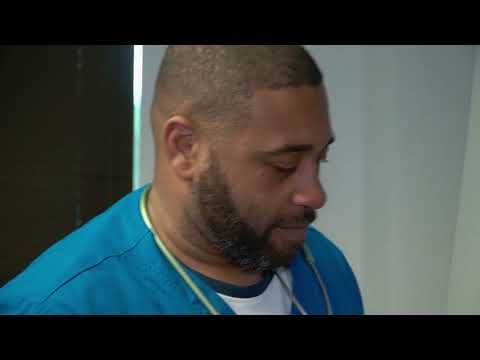20 Words Every Medical Assistant Should Know
Contents [show]
As a medical assistant you will be tasked with a variety of duties. To be successful in your role, there are 20 words you should know.
Checkout this video:
Basic medical terminology
Working in the medical field requires a working knowledge of Medical Terminology While you may not need to know every medical term out there, there are certain terms that are essential for Medical assistants Here are 20 of the most important medical terms every medical assistant should know:
Anatomy: The study of the structure of the body.
Biopsy: The removal and examination of tissue for diagnostic purposes.
Clinical: Pertaining to or based on actual observation and treatment of patients, as opposed to theory or experimentation.
Complaint: The reason for which a patient seeks medical care.
Condition: An illness, injury, syndrome, or other health problem.
Diagnosis: Identifying a condition or disease based on its signs and symptoms.
Common medical abbreviations
There are many common medical abbreviations that Medical Assistants should know. Here are 20 of the most common ones:
A&W – alive and well
BID – twice a day
BP – blood pressure
C – with
CA – cancer
cc – cubic centimeter
CHF – congestive heart failure
CKD – chronic kidney disease
CVA – cerebrovascular accident (stroke)
D&C – dilation and curettage (abortion)
Dx – diagnosis
EKG or ECG – electrocardiogram
ER or ED – emergency room or emergency department
GI – gastrointestinal
hgb or H&H – hemoglobin and hematocrit
hx or Hx of- history of
IBW or IBWI- ideal body weight or ideal body weight range
IDDM or Type I DM- insulin dependent diabetes mellitus
Anatomy and physiology
Anatomy is the study of the structure of the body, while physiology is the study of how the body functions. Both are important for medical assistants to know in order to understand medical conditions and treatments. Here are 20 words related to anatomy and physiology that every medical assistant should know:
1. Anatomy – the study of the structure of the body.
2. Physiology – the study of how the body functions.
3. Cells – the basic unit of life.
4. Tissues – a group of cells that work together to perform a specific function.
5. organs – a group of tissues that work together to perform a specific function.
6. system – a group of organs that work together to perform a specific function; examples include the circulatory system, respiratory system, and digestive system.
7. Structure – the physical makeup of something; can refer to bones, muscles, or organs.
8. Function – what something does; can refer to cells, tissues, organs, or systems.
9. Pathology – the study of disease; can be used to refer to an individual’s specific disease or disorders in general.
10 diagnosis – the determination of what disease a person has based on symptoms and/or tests; often used interchangeably with “diagnosis” but technically includes both symptoms and test results while “diagnosis” refers only to test results.
11 etiology – the cause of a disease; can be viral, bacterial, genetic, or environmental (e.g., exposure to toxins).
12 symptom – a change in bodily function or sensation that indicates disease; often used interchangeably with “sign” but technically refers only to subjective changes while “sign” refers to objective changes that can be observed by others (e .g . , swelling would be a sign but fatigue would be a symptom).
13 sign – an objective change that can be observed by others (e .g . , swelling would be a sign but fatigue would be a symptom); often used interchangeably with “symptom” but technically refers only to objective changes while “symptom” refers to subjective changes..
14 risk factor – anything that increases your chances of getting a disease; can be modifiable (e .g . , diet) or non-modifiable (e .g . , age).
15 treatment – anything done in order to fight or prevent disease; can include medication, surgery, and/or lifestyle changes
Medical procedures
There are dozens of medical procedures that medical assistants may be asked to perform on any given day. Here are 20 of the most common procedures medical assistants need to know:
1. Drawing blood: Medical assistants may be responsible for drawing blood from patients.
2. Giving injections: Medical assistants may also be responsible for giving injections to patients.
3. Checking vitals: Checking a patient’s vital signs (such as their blood pressure, temperature, and heart rate) is another common task for medical assistants.
4. Processing lab specimens: Medical assistants may collect and prepare lab specimens for testing.
5. EKGs and stress tests: EKGs and stress tests are used to assess a patient’s heart health. Medical assistants may be responsible for administering these tests.
6.splinting and casting: If a patient has a broken bone, the medical assistant may apply a splint or cast to help the bone heal properly.
7 X-rays: X-rays are used to diagnose injuries and illnesses. Medical assistants may be responsible for taking X-rays of patients.
8 MRI scanning: MRI scans are used to diagnose injuries and illnesses. Medical assistants may be responsible for scheduling MRI scans for patients.
9CT scanning: CT scans are used to diagnose injuries and illnesses. Medical assistants may be responsible for scheduling CT scans for patients.
10 ultrasounds: Ultrasounds are used to diagnose injuries and illnesses. Medical assistants may be responsible for scheduling ultrasounds for patients
Pharmacology
For those in the medical field, having a working knowledge of pharmacology is essential. Pharmacology is the study of how drugs work in the body, and encompasses everything from drug development and testing to regulations and safety.
Medical assistants need to be familiar with common drugs and their uses, as well as drug classifications and side effects. Here are 20 words every medical assistant should know:
-Analgesic: A pain reliever.
-Anti-inflammatory: Reduces swelling.
-Antibiotic: Fights infection.
-Antidepressant: Treats depression.
-Antihistamine: Reduces histamine levels, used to treat allergies.
-Beta blocker: Lowers blood pressure, treats heart conditions.
-Calcium channel blocker: Lowers blood pressure, treats heart conditions.
-Contraceptive: Prevents pregnancy.
-Diuretic: Increases urination, used to treat high blood pressure and edema.
– hypnotic: A sleep aid.
iInotropic: Increases the strength of muscle contraction, used to treat heart conditions.
Laxative: Relieves constipation.
MAOI: An antidepressant that inhibits the action of monoamine oxidase enzymes.
NSAID: Nonsteroidal antiinflammatory drug; reduces pain and inflammation without steroids..
Statins: A class of cholesterol lowering drugs..
Stimulant: Increases alertness and cardiovascular activity..
These 20 words should get you started on your journey to becoming a pharmacology expert!
Laboratory procedures
There are many laboratory procedures that medical assistants need to be familiar with. Below are 20 of the most common terms you is likely to encounter.
1. Arterial blood gas (ABG): A test that measures the amount of oxygen and carbon dioxide in the blood.
2. Blood chemistry: A group of tests that measure various substances in the blood, such as glucose, cholesterol, and iron.
3. Complete blood count (CBC): A test that measures the number of red and white blood cells, as well as the number of platelets in the blood.
4. Chest x-ray: An x-ray of the chest that can be used to look for problems with the lungs or heart.
5. Culture and sensitivity (C&S): A test used to identify bacteria in a sample and determine which antibiotics will be effective against them.
6. Electrocardiogram (EKG or ECG): A test that measures the electrical activity of the heart and can be used to detect heart problems.
7. Hemoglobin: An iron-containing protein found in red blood cells that carries oxygen from the lungs to other parts of the body.
8. Kidney function tests: A group of tests used to evaluate how well the kidneys are working.
9 Lipid panel: A group of tests used to measure fats (lipids) in the blood, including cholesterol and triglycerides.
10 Liver function tests: A group of tests used to evaluate how well the liver is working.
11 Prothrombin time (PT): A test used to measure how long it takes for blood to clot. PT is usually done as part of a complete workup for someone who is taking a medication that affects blood clotting, such as warfarin (Coumadin).
12 PUBS: Papanicolaou smear (Pap smear); a screening test for cervical cancer; usually done on women who are 21 years old or older; may also be done on women under 21 if they have certain risk factors 13 Sputum culture: A test used to identify bacteria or other organisms in a sample of sputum (mucus coughed up from the lungs).
14 Stool culture: A test used to identify bacteria or other organisms in a sample of stool (feces). 15 Thyroid function tests: A group of tests used to evaluate how well the thyroid gland is working; often done if someone has symptoms suggestive of a thyroid disorder, such as fatigue or weight gain/loss 16 Urinalysis: A group of tests performed on a urine sample; can provide information about kidney function, urinary tract infections, or other problems 17 Venous puncture: The act of drawing blood from a vein 18 White blood cell count (WBC): A test that measures the number of white blood cells in a sample of blood; an elevated WBC may indicate infection 19 Blood pressure: The force with whichblood flows through arteries
Diagnostic tests
A medical assistant should know the difference between common diagnostic tests. Diagnostic tests help to measure a patient’s health and are used to detect, diagnose, andmonitor conditions. The most common diagnostic tests are X-rays, computed tomography (CT) scans, magnetic resonance imaging (MRI) scans, and ultrasounds.
Medical billing and coding
In medical billing and coding, certain key terms are used frequently. If you’re new to the field, you may not be familiar with all the jargon. Here are 20 words every medical assistant should know:
1. ICD-10-CM: The International Classification of Diseases, Tenth Revision, Clinical Modification is a code used to classify diseases and injuries.
2. CPT: Current Procedural Terminology is a code used to describe medical procedures and services.
3. HCPCS: Healthcare Common Procedure Coding System is a code used to describe medical supplies and services that are not included in the CPT codebook.
4. DRG: Diagnosis Related Group is a classification system that groups together diagnoses with similar clinical characteristics and treatment implications.
5. Inpatient: A patient who has been admitted to the hospital for overnight care.
6. Outpatient: A patient who has been seen by a doctor but has not been admitted to the hospital for overnight care.
7. ER: Emergency Room, the section of the hospital where patients with urgent medical needs are seen on a walk-in basis.
8. OR: Operating Room, the section of the hospital where surgeries are performed.
9. Anesthesia: The use of drugs to block pain during surgery or other medical procedures.
10.”Pre-op”: Short for “preoperative,” meaning before surgery. Often used as an adjective (e.g., pre-op instructions).
11.”Post-op”: Short for “postoperative,” meaning after surgery.” Often used as an adjective (e
Medical office procedures
As a medical assistant, you will be responsible for a variety of office procedures. Here are 20 words every medical assistant should know:
1. Appointment – A scheduled visit with a healthcare provider.
2. Authorization – Permission from a patient or insurance company to proceed with treatment.
3. Billing – The process of submitting claims to insurance companies and collecting payments from patients.
4. Chart – A record of a patient’s medical history, medications, and test results.
5. Coding – The process of assigning codes to diagnoses and procedures for insurance reimbursement purposes.
6. Consent – An agreement by a patient to undergo treatment or participate in a research study.
7. Referral – A recommendation from one healthcare provider to another for treatment or further testing.
8. Diagnosis – The identification of a disease or condition based on symptoms, laboratory tests, and imaging studies.
9. Treatment – The provision of medical care for a disease or condition, which may include medication, surgery, or lifestyle changes.
10. Prognosis – A prediction of the likely course and outcome of a disease or condition based on available information.
11
Professionalism and ethics
There are a few dictionary definitions for professionalism, but medical assistants can sum it up simply by using the Golden Rule: “Do unto others as you would have them do unto you.” In other words, always communicate and act with patients in the way that you would want someone to communicate and act with you or your family.
That doesn’t mean medical assistants will always agree with patients or like them — after all, personality conflicts do happen in every workplace — but it does mean that they should always be respectful and courteous. Professionalism also includes maintaining confidentiality, adhering to HIPAA privacy regulations, keeping up with required continuing education credits and licensure renewals, and playing well with others on the healthcare team.
Ethical conduct is closely related to professionalism, but it goes a step further. In addition to behaving in a professional manner at all times, medical assistants must also make ethical choices when faced with difficult decisions. For example, suppose a patient asks a medical assistant for advice about whether to continue treatment for a terminal illness. The medical assistant is not qualified to give this type of advice, but he or she can ethically refer the patient to someone who is qualified, such as a social worker or chaplain.







